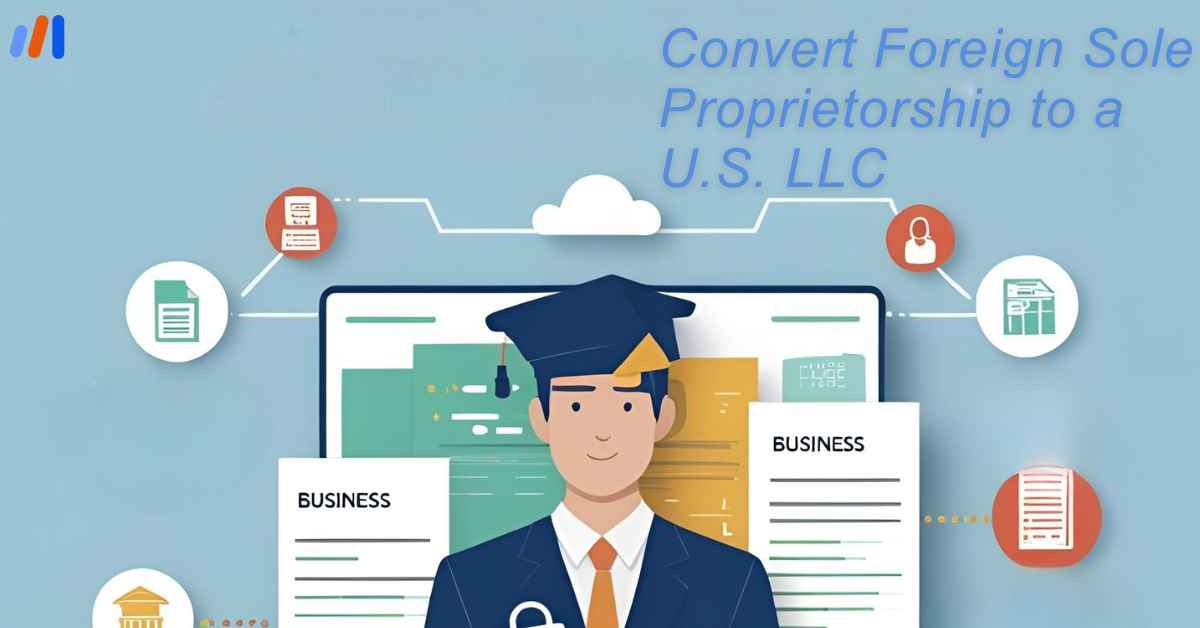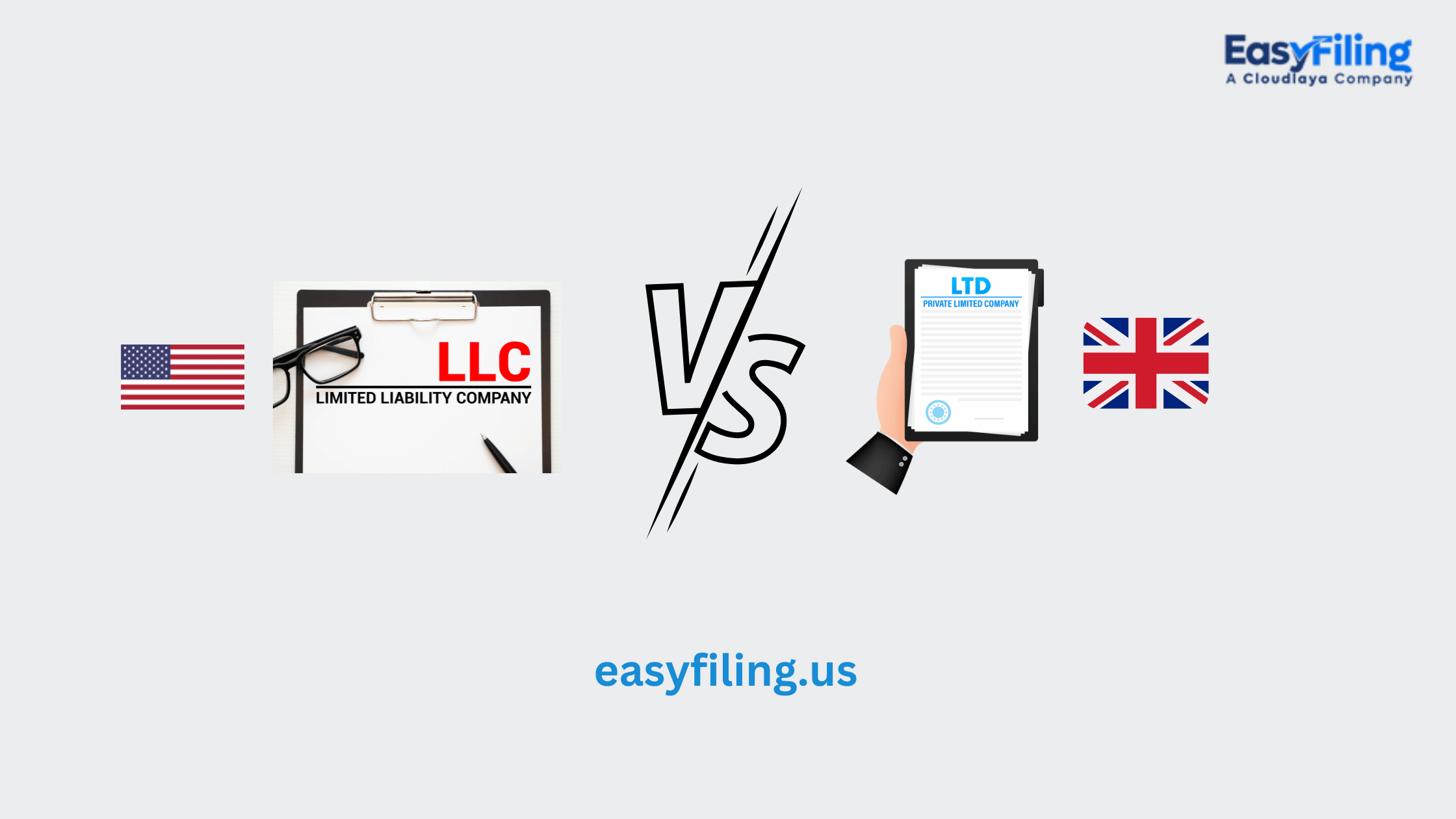When starting a business, one of the most critical aspects is to select the most appropriate legal structure for your needs. For micro-businesses, a sole proprietorship vs a single-member LLC might be the most relevant. While they may appear the same on the surface because both suit single-owner businesses, they differ greatly on issues like liability, taxation, compliance, and growth.
This guide helps break down the differences between the two structures and assists you in identifying the one that best meets your business objectives, protects your interests, and is in line with your long-term goals.
The Basics
It is vital to comprehend the basics of sole proprietorship vs single-member LLC before delving into more specific differences.
A sole proprietorship is the default type of structure available, and the simplest, requiring no state registration. This type is suitable for low-risk freelancers who want to start their operations easily and quickly.
On the other hand, A single-member LLC (Limited Liability Company) is a legal entity that has been formed at the state level. It provides limited liability protection and flexible tax benefits, which are appealing to people who want to separate themselves from their business.
To summarize, a sole proprietorship is easy to form and manage, but comes with risk, whereas a single-member LLC requires more effort to establish but provides enhanced protection and credibility.
Sole Proprietorship
A sole proprietorship is owned and operated by a single person with no legal separation between the individual and the entity. If you have ever sold handmade items or provided consulting services online without formally registering a business, you likely operated as a sole proprietor.
Features of sole proprietorship include:
- No distinct business entity
- All profits and losses are allocated to the owner directly
- Business debts are debts of the owner incurred personally
- Little to no formal documentation is needed to establish it
This structure is popular among first-time entrepreneurs and side-hustlers because it is straightforward.
Single Member LLC
A single-member LLC is a type of limited liability company owned by a single person. It offers legal protection by considering the business as an independent entity, protecting the owner’s personal assets from most business obligations.
Advantages include:
- Distinct personal and business liability protections
- Optional S-Corp or C-Corp classification with an easy default of sole proprietor.
- Enhanced business reputation and professionalism
- Relatively simple and less stringent funding eligibility compared to the sole proprietorship
In the controversy surrounding sole proprietorship and single-member LLCs, the single-member LLC is best suited for those needing an efficient, flexible, protected, and scalable business structure.
Initiating a Sole Proprietorship
A sole proprietorship is perhaps the easiest business type to set up in the U.S. There is no requirement to file formation documents with the state, but certain permits or licenses may be applicable depending on your industry and location.
Steps to set up a sole proprietorship:
- Obtain a business name that best describes your company and is not already in use.
- Obtain a Doing Business As license if you wish to utilize a name other than your legal name.
- Obtain local business licenses or permits.
- Open a business bank account to separate business and personal finances for better tracking.
Like other business structures, sole proprietorship offers simplicity, which makes the model appealing for lower-risk ventures, but it also comes with predicaments such as the absence of liability protection, which may be worrisome as the business grows.
Forming a Single-Member LLC
Starting a single-member LLC requires registration at the state level and comes with certain administrative obligations.
Steps to Set Up a Single-Member LLC:
Decide on a business name that adheres to your state’s business name regulations.
Accomplish the following to establish an LLC:
- File Articles of Organization with the Secretary of State.
- Designate a registered agent for service of process.
- Draft an Operating Agreement (recommended even if not required).
- Apply for an EIN (Employer Identification Number) with the IRS.
- Obtain relevant state-level tax identification numbers and business licenses.
- Maintain annual compliance, such as filing reports and paying fees.
There’s more to fill out than with a sole proprietorship, but that comes with the peace of having liability protection.
How Do Taxes Work?
In the same way that sole proprietorship vs single member LLC comparison works, taxation is another crucial component. Luckily, both are pass-throughs by default, which means profits will flow to the owner’s individual tax return.
That’s not the case for LLCs since they allow flexibility on how you classify taxes, thus giving more tailored strategy options to achieve goals set for the business.
Tax Responsibilities as a Sole Proprietor
All profits from a sole proprietorship business structure are taxed under personal income tax. Business profit and expenses must be reported on Schedule C, which is part of IRS Form 1040. Sole proprietors are also obligated to pay:
- Self-employment taxes
- Quarterly estimated tax payment penalties, such as
- State-level taxes, where applicable
Payment of income tax at this level can become burdensome, considering revenue, as there is no legal distinction.
Tax Responsibilities as a Single-Member LLC
IRS allows single-member LLC taxation as a disregarded entity, equating it to sole proprietorship taxation. However, LLCs can opt to be taxed as an S Corporation or C Corporation, allowing:
- Self-employment tax reduction through salary and dividend split (S Corp)
- Retained earnings and reinvestment options (C Corp)
- Expanded deductions for taxes, such as health insurance or retirement contributions.
There are considerable advantageous tax planning opportunities, thus rendering the LLC more financially beneficial in the long run.
Legal Responsibilities
In the context of liability, there is perhaps the greatest difference between a sole proprietorship and a single-member LLC.
Sole proprietors face unlimited liability. If your business gets sued or defaults on a loan, you could lose your personal assets such as your home, savings, and vehicle.
Business debts or legal judgments usually have no bearing on your personal life unless corporate formalities aren’t adhered to. It is this lack of personal liability that single-member LLCs offer, unlike proprietorships.
This is the single reason why many entrepreneurs choose to convert their sole proprietorships to LLCs as soon as their businesses start gaining momentum. This shield greatly supports personal assets.
Advantages of Sole Proprietorships
Issues resolved or avoided as a result of a lack of documentation:
- Ease of setup
- Low cost
- Total control
There is no taxation applicable to sole proprietorships, unlike standard business models:
-
Simple taxation: no tax returns required
A sole proprietorship works with less legal or financial risk, making it ideal for side jobs or hobbies.
Disadvantages of Sole Proprietorships
Where there is an advantage, there is always a disadvantage:
- Your debts are your business’
- Unlimited personal liability
Working toward a goal becomes nearly impossible due to these entrepreneurial risks, partnered with sole proprietorship struggles.
There are no perks to having business credit aside from shielding personal finances:
- No legal separation
- Ending a sole proprietorship business isn’t possible while still alive.
Lack of continuity doubles as a problem and a single theme: Cessation of existence occurs when the owner dies or becomes incapacitated.
Lastly, these offer the lowest amount of credibility alongside funded opportunities.
There is not a single formally self-contained business entity aside from single-member LLCs that sole proprietorships can claim to stand next to.
All of these make these structures best suited for someone seeking easy navigation in life.
Pros of A Single-Member LLC
- The proprietor’s personal assets remain shielded from business liability.
- Ability to choose how the business is taxed: S-Corp, C-Corp, or other.
- Improved customer and lender relationships as LLCs convey professionalism.
- Facilitates contracting, property owning, and legal governing by giving an entity status.
- Businesses can withstand ownership and management shifts.
These pros accentuate why single-member LLCs are the best fit for sophisticated entrepreneurs.
Cons of Single-Member LLC
- Operating costs, including creation, annual filings, and agent business listing fees, are higher.
- Reports and ongoing compliance tasks at the state level translate to increased work.
- If a corporation is chosen for taxation, it may face higher difficulties with taxes.
- Failure to adequately maintain a business and personal financial separation can still incur liability, aka, piercing the corporate veil.
Even so, the myriad benefits of flexibility and legal protection often outweigh these obstacles.
Sole Proprietorship vs LLC: What Will Work For You?
In the end, determining whether sole proprietorship or single-member LLC is more suitable depends on an individual’s business aims, budgeting, level of risk acceptance, and administrative workload.
Sole Proprietorship Vs Single-Member LLC
| Consideration | Sole Proprietorship | Single Member LLC |
|---|---|---|
| Startup Cost | Low | Medium to High |
| Liability Protection | None | Yes |
| Tax Flexibility | Limited | High |
| Administrative Requirements | Minimal | Moderate |
| Credibility with Clients | Low | High |
| Ideal for | Low-risk, side hustles | Long-term business growth |
If you want to experiment with a business idea at a low cost, a sole proprietorship may work for you. However, a single-member LLC offers more attractive asset protection, tax benefits, and growth potential.
Additional Business Compliance Requirements
A single-member LLC has more compliance requirements than a sole proprietorship.
Sole Proprietorship Compliance:
- Renew any necessary regional licenses or permits.
- Submit your yearly personal income tax return alongside Schedule C.
- Keep basic financial documentation.
Single-Member LLC Compliance:
- Submit annual or biennial reports to your state.
- Pay the maintenance fees for the LLC.
- Have an active registered agent.
- Maintain operating agreements that include meeting minutes, even if not legally mandated.
- Keep personal finances and business accounts separate.
An LLC does require more ongoing effort, but the ease of doing business, legal protections, and scalability often make the long-term costs worth it.
Final Thoughts: Sole Proprietorship vs Single-Member LLC
The decision on whether to choose a sole proprietorship or a single-member LLC is pivotal for the future of your business. On one hand, a sole proprietor operates with less cost and hassle, but lacks flexibility and protection. Conversely, a single-member LLC certainly requires more effort up front but offers peace of mind, credibility, and strategic tax opportunities.
If you’re truly serious about a business and especially when you’re assuming financial risk, hiring employees, or planning growth, a single-member LLC is often the smartest choice to consider.
Supporting Global Entrepreneurs: Easy Filing
We at Easy Filing recognize the challenges U.S. and foreign entrepreneurs face in regards to business formation. That’s why we provide the following services:
- Formation of Limited Liability Companies
- Employers’ Identification Number applications
- Services of an Agreed Agent
- Assistance in obtaining Individual Taxpayer Identification Numbers for non-U.S. Citizens
- Supporting clients with various business compliance issues
Have the confidence to start your business the right way. From understanding the difference between a sole proprietorship vs a single-member LLC and requiring aid to form your business, Easy Filing is here to help you.
File Your LLC Today
25$ off with a coupon
Lock in EasyFiling's transparent rates and get lifetime compliance support at no extra cost.
Get Started Now








